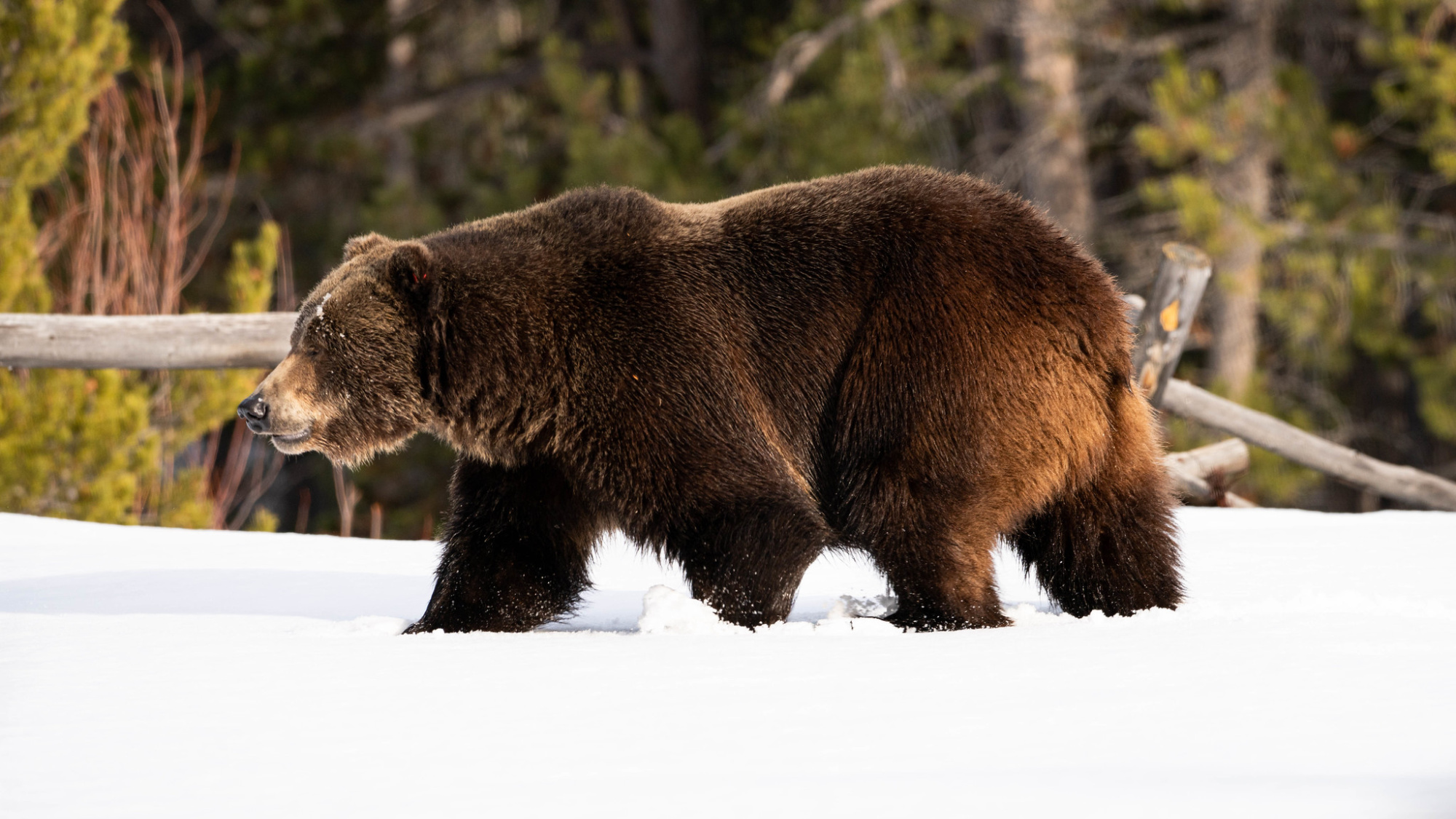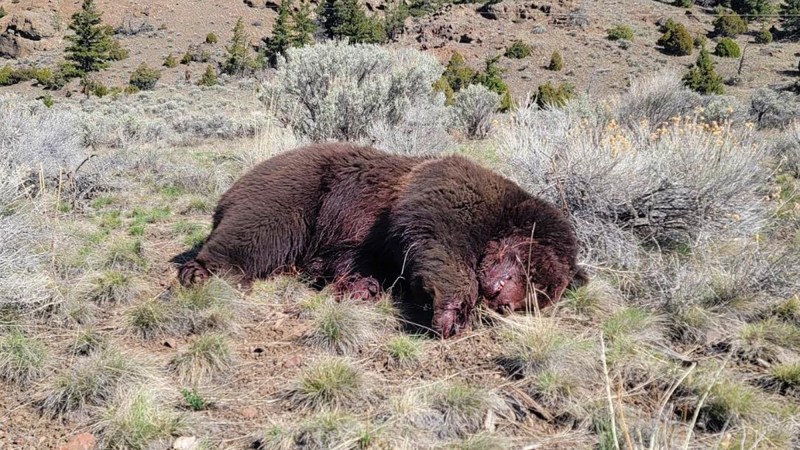On Sunday, officials with the Wyoming Game and Fish Department were called to some private land near Ten Sleep in Washakie County to investigate a case of livestock predation. They determined that a grizzly bear had been roaming around a ranch in the area for a week, eventually predating on a cow and injuring it. The rancher whose property and livestock were impacted remains anonymous to the public.
This wouldn’t have been huge news in other parts of Wyoming, particularly in the western region where the 1,000-plus grizzlies dispersing from Yellowstone National Park run into conflict with livestock producers, hunters, and hikers all the time. But in Ten Sleep, nestled in the southwestern foothills of the Bighorn Mountains where grizzly bears haven’t lived for over a century, it came as a surprise.

The subadult male grizzly that attacked the cow had traveled some 80 miles east of the “Demographic Monitoring Area,” WGFD writes in a press release — what they define as “the area considered biologically and socially suitable for grizzly bears.”

After consulting with the U.S. Fish and Wildlife Service, WGFD officials euthanized the bear due to its predation on the cow and how frequently it was wandering near the ranch.
Where exactly this grizzly came from remains a mystery. High concentrations of grizzlies exist in and around Yellowstone National Park in northwestern Wyoming and Glacier National Park in northwestern Montana. (The other four grizzly recovery zones are further west, in Idaho, Oregon, and Washington.) But other instances of grizzlies dispersing across whole basins is not unheard of. In July 2023, Montana Fish, Wildlife and Parks was surprised to discover a grizzly had shown up in the Pryor Mountains south of Billings. A migration between the Pryors and the Beartooth Mountains to the west, which are part of the Greater Yellowstone Ecosystem, would cover 30 miles and cross at least three state highways. A grizzly traveling from the southern GYE to Ten Sleep would cover more than twice that distance.
Read Next: Where Do All the Problem Bears Go?
But grizzlies are also capable of covering 20 to 40 miles in a day, FWP writes. That means they could make it to the Bighorns from the southern GYE in less than three days if motivated. Seeing as how the Bighorns offer very little in the way of good grizzly habitat, WGFD director Brian Nesvik says there shouldn’t be concerns about a population establishing there.
“Wyoming’s grizzly bear population is managed and monitored where suitable habitat exists as designated by the USFWS and informed by the Interagency Grizzly Bear Study Team,” Nesvik says in the press release. “The Bighorn Mountain Range is not suitable habitat and the department is not interested in allowing grizzly bears to occupy this area. Their expansion into unsuitable habitat leads to increased conflict potential between bears and humans, which impedes the success of grizzly bear conservation.”
Grizzly bears in Wyoming are a federally protected species and are listed as “threatened.” The 2021 population count for the GYE, a large majority of which is in Wyoming, was 1,069 bears.
















